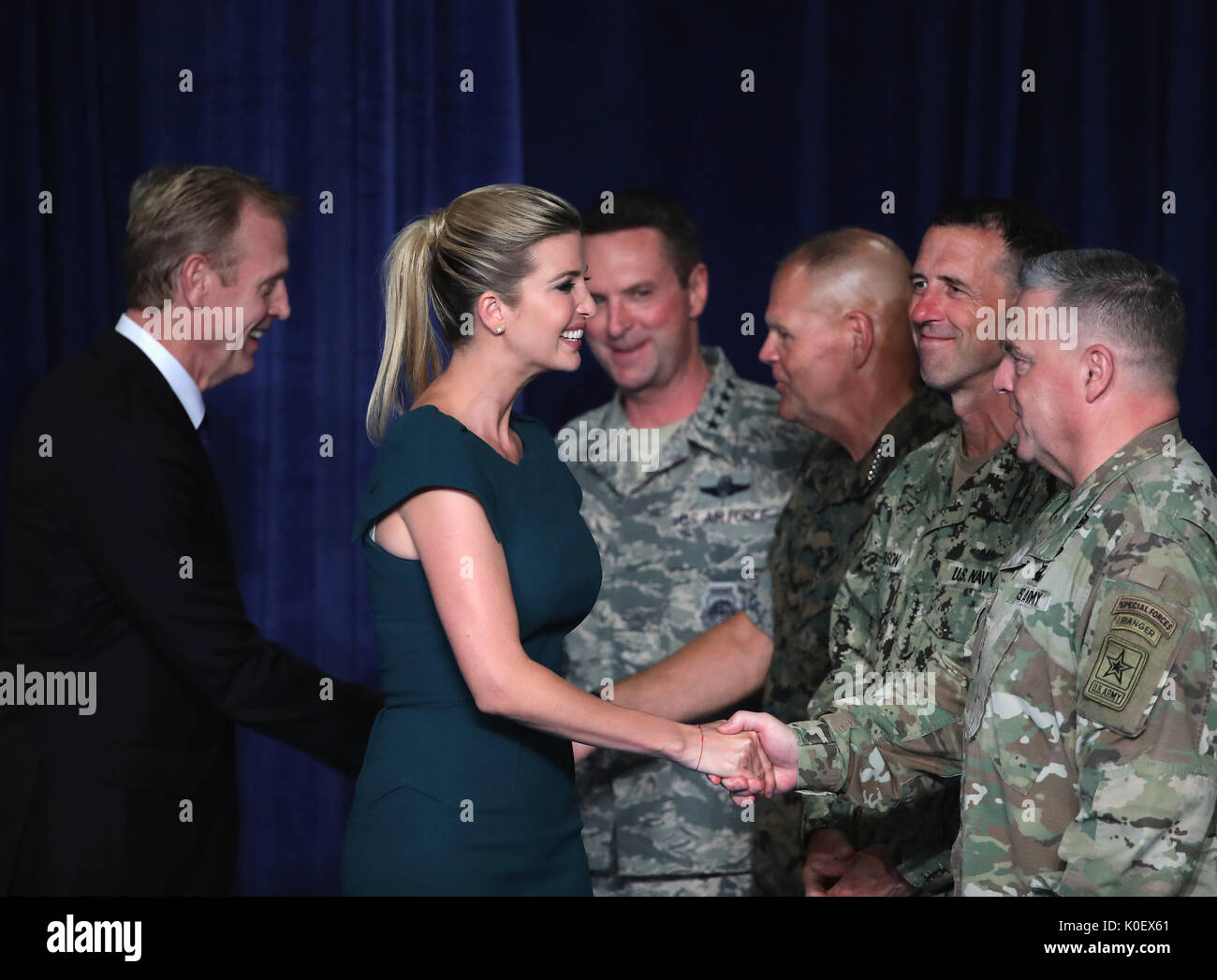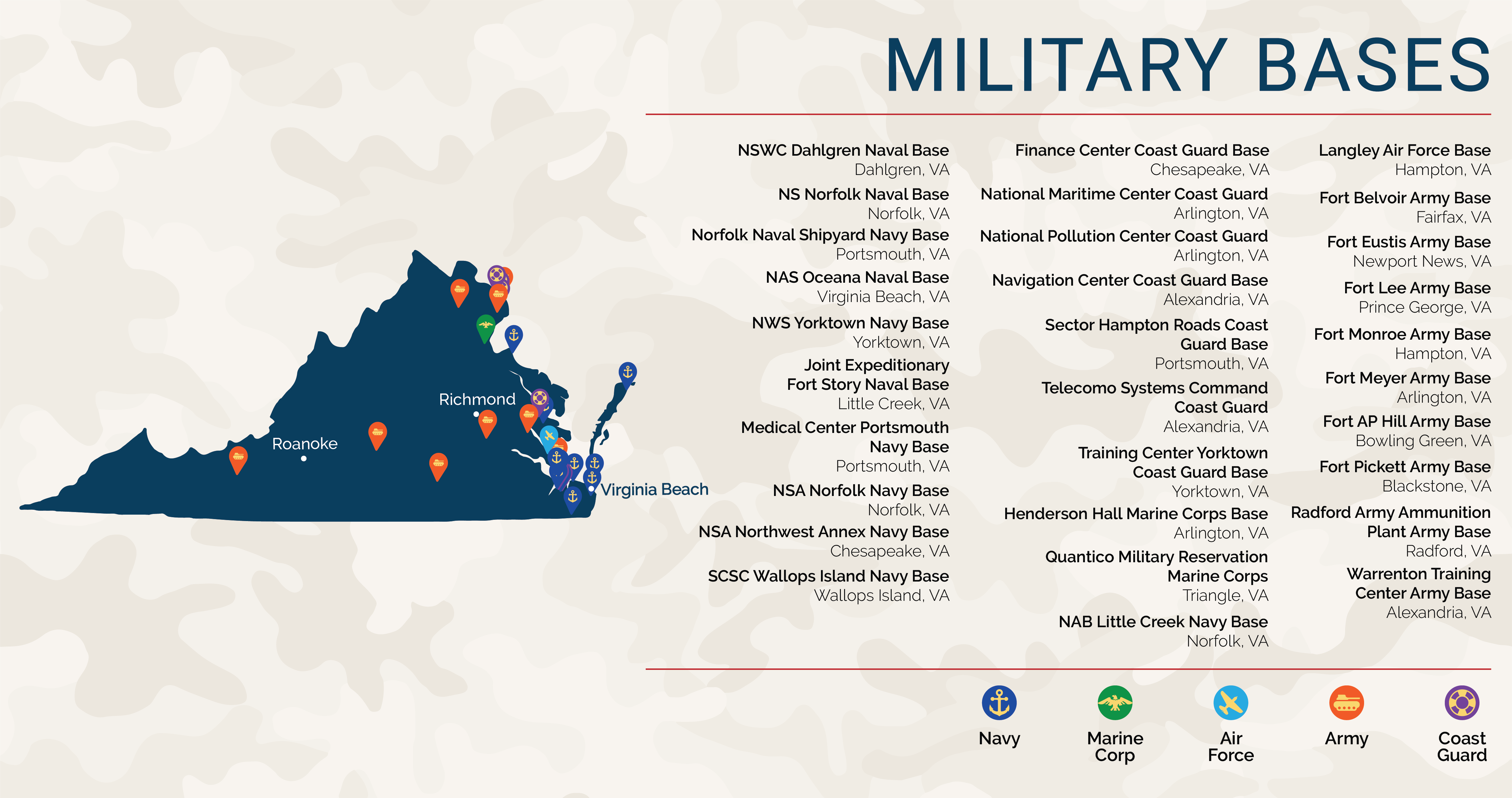Va Military Base - Photo of the sign in front of US Army Garrison Fort AP Hill on Route 301 in Virginia in the spring.
38°07'04"N 77°16'35"W / 38.11778°W 77.27639°W / 38.11778; -77.27639 Coordinates: 38°07'04"N 77°16'35"W / 38.11778°N 77.27639°W / 38.11778; -77.27639
Va Military Base

Fort A.P. Hill is a United States Army training and maneuver facility located near Bowling Green, Virginia. This course focuses on weapons training and is used by all branches of the United States Armed Forces. It was named after Gerald A. P. Hill, a Confederate lieutenant who was a native of Virginia.
How Fort Bragg, The Largest Us Military Base Today, Got Its Start
Fort A.P. Hill is one of the US Army installations named for Confederate soldiers recommended by the Naming Commission.
On January 5, 2023, United States Deputy Secretary of Defense William A. LaPlante (USD (A&S)) directed the full implementation of the Naming Commission's recommendations throughout the DOJ.
In the spring of 1940, the War Plans Division of the Army General Staff developed a plan to create a four million meter national army that would allow for simultaneous operations in the Pacific and European theaters. In July 1940, resettlement work began covering approximately 60,000 acres (240 km).
Lieutenant Colonel Oliver Marston, an artillery officer stationed in Richmond, Virginia and acting commander of the Third Corps, conducted a detailed investigation in September 1940 in the Bowling Green, Virginia area. He strongly suggested that the War Department buy Caroline. area site.
Reserve Mps Find New Opportunities With Old Guard
Fort A.P. Hill was established as an Army training facility on June 11, 1941, under War Department Order No. 5. In its first year, the facility was used as a staging area for the II Corps and three activated National Guard divisions. From the Mid-Atlantic states. In the fall of 1942, Fort AP Hill housed the headquarters and corps of Major General George S. Patton's Task Force A, part of Task Force West for the Allied invasion of North Africa. During the early years of World War II, the post continued to serve as a training ground for corps and divisional units. Beginning in 1944, field training was conducted at the Officer Candidate School, and new recruits were recruited from nearby Fort Lee, Eustis, and Belvoir.
During the Korean War in 1952, Fort AP Hill became Camp A.P. Designated Hill, it was the headquarters of VII Corps and the main training ground for units sent to Europe, including the 3rd Armored Cavalry Regiment. The fort was the center of the Engineer Candidate School that trained at Fort Belvoir during the Vietnam War.
Explosive Ordnance Disposal training was completed in July 2011 and the first session was held on 17 October 2011. It is named after Captain Jason McMahon, who died in Afghanistan in 2010.
/cdn.vox-cdn.com/uploads/chorus_asset/file/22956838/AP21273685908216.jpg)
The center provides advanced explosive ordnance disposal technical training and tactical skills education to officers and enlisted personnel.
Naval Air Station Oceana
On January 24, 2014, the asymmetric warfare training center with a cost of 90.1 million US dollars was officially put into operation. The 300-acre (120 ha) training complex includes headquarters, barracks, administration, training and maintenance facilities, an urban training area, a 12-mile (19 km) range, and a known range of 800 meters (2,600 ft), range light demolition and indoor shooting range.
This course focuses on joint and combined arm training. All branches of the United States Armed Forces conduct training at Fort AP Hill, and the facility has hosted training for foreign allies, from supporting mobilization efforts to helping train units for deployment.
It is an annual military training program for active duty and reservists of the United States Army, United States Navy, United States Marine Corps, and United States Air Force, as well as cadets of the Reserve Officer Training Corps and other agencies government, including the State Department used throughout. US Interior, Customs and Border Protection, federal, state and local security agencies and law enforcement.
The installation hosted the Boy Scouts of America National Scout Jamboree in 1981, 1985, 1989, 1993, 1997, 2001, 2005 and 2010.
Abandoned Military Base Towers In Newport News, Va [1200x1600]
Around 35,000 scouts and around 250,000 visitors attended. In 2013, the Boy Scouts moved the Jamboree to its new permanent home at the Bechtel Summit Reservation, an adventure camp in Fayette County, West Virginia. This article is about the installation of the United States Marine Corps. For the town of the same name, see Quantico, Virginia.
Capital Marine Detachmt, Marine Corps Alliance is hosting the 2014 USMC 32nd Annual Enlisted Parade and Awards Ceremony at MCB Quantico.
38°30'7" N 77°18'21" W / 38.50194° E. 77.30583° W / 38.50194; -77.30583 Coordinates: 38°30'7"N 77°18'21"W / 38.50194°N 77.30583°W / 38.50194; -77.30583

Marine Corps Base Quantico (commonly abbreviated MCB Quantico) is a United States Marine Corps base located near Triangle, Virginia, covering nearly 55,148 acres (86,169 m2) in Prince William County, north County Stafford, and southeast Fauquier County. . Used primarily for training purposes, MCB Quantico is known as the "Crossroads of the Marine Corps."
U.s. To Begin Housing Afghan Interpreters At Virginia Military Base
Quantico Station is a Csus Designated Place (CDP) located in Prince William and Stafford Counties, Virginia, USA, and is used by the Csus Bureau to designate primary housing. In 2010, the population was 4452 people.
It is home to the US Marine Corps Combat Development Command, which develops the combat strategy of the US Marine Corps and is home to a large community of more than 12,000 military and civilian personnel (including their families) . It has a budget of approximately $300 million and is home to the Marine Corps Officer Candidate School. The Marine Corps Research Center at Quantico conducts research and development of equipment for the Marine Corps, particularly communications. Also located at Quantico was the Marine Corps prison, Brig., until it was subsequently closed and demolished on December 31, 2011.
The FBI Academy, the FBI's main research and training facility, and the Drug Enforcement Administration's (DEA) main training facility are also located on the base.
In 2001, the center was designated by the National Register of Historic Places as part of the Quantico Naval Base Historic District.
Exposures And Military Bases In The United States
The area includes 122 buildings, two landscapes and sculptures, and a water tower in the center of the base.
Properties contributing to separate efforts include Tnessee Camp, Camp Frch, Commanding General's Quarters, and Rising Hill Camp.
Camp Quantico is located near the Potomac River. The Patowomax (Algonquian) first lived in the area in the 16th century. The name "Quantico" is believed to be derived from a Native American term that translates to "big stream". Research shows that European explorers first visited in the summer of 1608 and settled later that year.

From the beginning of the 18th century, the area became famous because of the tobacco trade in the port of Akia. In those days, traveling along the muddy road was slow, so many villages were established along the river. In addition, the site was a busy north-south stopover between New York and Florida.
Military Homes For Rent In Quantico, Va
Early settlements and plantations along the plains bordering the Potomac. The hills west of the river were uninhabited until the early 18th century. Prince William County was incorporated in 1731 and the "Quantico Road" was opened. This road provided important access to this area from the western part of the cape. By 1759, the route stretched across the Blue Ridge Mountains to the Shandoa Valley.
The first military activity in Quantico occurred during the American Revolutionary War, when the village of Quantico Creek became the main naval base for the 72-ship fleet of the Commonwealth of Virginia, where many of the state's soldiers served.
The Marines first visited the site in 1816, when a group of Marines sailing for Washington were stopped in the ice in the Potomac and forced to march to Dumfries, Virginia. Here they met a young captain, Archibald Hederson, who lived nearby. The ruthless Hudson hired them a wagon and took them on their way.
During the American Civil War, control of the Potomac River became critical for both armies. The Federals chose the Quantico Creek area on the Potomac to set up a gun battery. This allowed them to take full advantage of several points where their cannons could hit anything on the water, thereby preventing them from using Confederate waterways. One of those sites included Shipping Point, a one-day site for the Marine Corps Systems Command.
Army Military Bases In Virginia
Gun emplacements around Quantico were used until the end of the war, when battles were fought at Manassas, Virginia, and Fredericksburg, Virginia. After a 12-day battle at Spotsylvania Courthouse, where the Union lost around 25,000 soldiers, the war broke out in the Quantico area.
After the war, railroads became an integral part of transportation in Virginia. In 1872, the Richmond, Fredericksburg and Potomac Railroad was formed by merging several northern and southern railroads at Quantico Creek. This railway still runs through the base and is in daily use.
The village became known as "Quantico" and was built by the Quantico Company.

Military base in va, va beach military base, military base in hampton va, newport news va military base, portsmouth va military base, military base, military base norfolk va, charlottesville va military base, military base virginia beach va, quantico va military base, military base in richmond va, williamsburg va military base
0 Comments